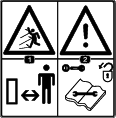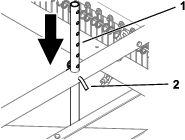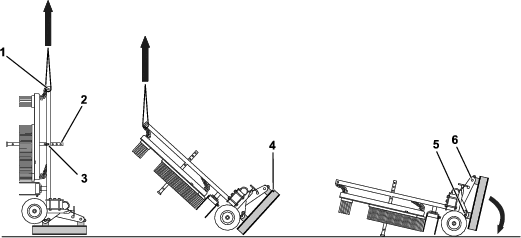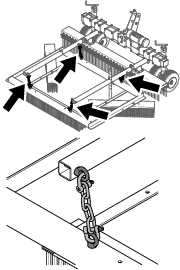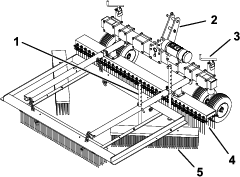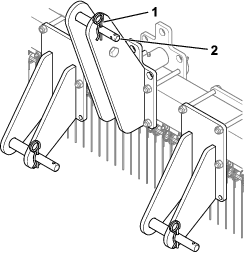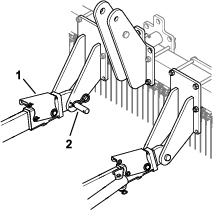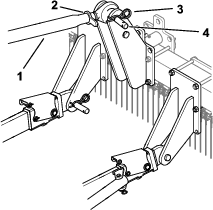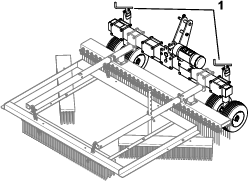Maintenance
Caution
If you leave the key in the switch, someone could accidently start the engine and seriously injure you or bystanders.
Remove the key from the traction unit switch before you perform any maintenance.
Maintenance Safety
-
Before adjusting, cleaning, servicing, or leaving the machine, do the following:
-
Position the machine on a level surface.
-
Move the throttle switch to the low-idle position.
-
Disengage the PTO (if applicable).
-
Ensure that the traction is in neutral.
-
Engage the parking brake.
-
Shut off the engine of the traction unit and remove the key.
-
Wait for all moving parts to stop.
-
Allow machine components to cool before performing maintenance.
-
-
Perform only those maintenance instructions described in this manual. If major repairs are ever needed or assistance is desired, contact an authorized Bullseye distributor.
-
Ensure that the machine is in safe operating condition by keeping nuts, bolts, and screws tight.
-
If possible, do not perform maintenance while the engine is running. Keep away from moving parts.
-
Carefully release pressure from components with stored energy.
-
Support the machine with blocks or storage stands when working beneath it. Never rely on the hydraulic system to support the machine.
-
Never crawl under the attachment. If necessary, tilt the attachment.
-
Ensure that all guards are installed and secured after maintaining or adjusting the machine.
-
To ensure safe, optimal performance of the machine, use only genuine Bullseye replacement parts. Replacement parts made by other manufacturers could be dangerous, and such use could void the product warranty.
Replacing the Spring Pins
As you use the attachment, the spring pins will wear. Replace worn spring pins.
-
Park the machine on a level surface, engage the parking brake, shut off the engine, and remove the key from the traction unit.
-
Secure the attachment from movement.
-
Remove the knot from 1 end of the rope and remove it from the spring pin that you are replacing.
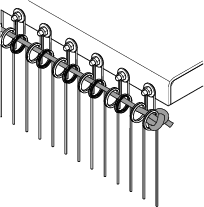
-
Loosen the nut for the spring pin that you are replacing.
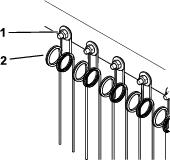
-
Remove the existing pin and insert a new pin.
-
Tighten the nut.
-
Thread the rope through the spring pin loops and tie a knot to secure it to the pin on the end as shown in Figure 17.
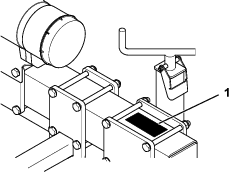

 , which means
Caution, Warning, or Danger—personal safety instruction. Failure
to comply with these instructions may result in personal injury or
death.
, which means
Caution, Warning, or Danger—personal safety instruction. Failure
to comply with these instructions may result in personal injury or
death.

